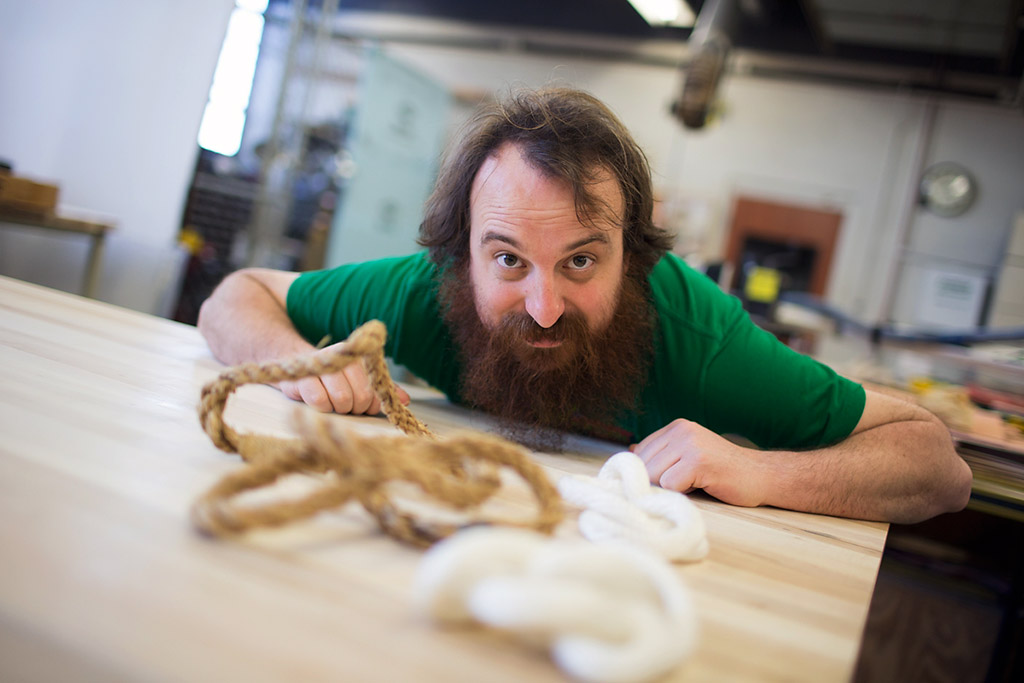 Clarksville, TN – There are mathematicians and there are artists, and then there is the rare breed that find a way to merge two of the most seemingly disparate fields of study imaginable.
Clarksville, TN – There are mathematicians and there are artists, and then there is the rare breed that find a way to merge two of the most seemingly disparate fields of study imaginable.
Austin Peay State University math major Paul Watkins does not resemble the “traditional” math student – with long hair and an even longer beard, Watkins looks more like the type who would be at home in an art studio.

Now a math major with a minor in studio arts, Watkins spends a little bit of time solving problems, a little bit of time creating sculptures — and a little bit of time doing both.
“I would say I work on math and art separately, but that’s not really the case,” Watkins said. “As I’m working on art, I’m thinking of math, or maybe I’m working on math and thinking about the forms and pictures that the equations I’m solving are describing.”
Working alongside mentors in both APSU’s mathematics and art departments, Watkins was awarded a 2016-16 Presidential Research Scholarship (PRS) by APSU’s Office of Undergraduate Research for his proposal “Exploring Knot Theory Through Sculpture.”
Awarded annually, the PRS provides $3,000 to student-faculty teams in support of scholarly and creative activity.
Watkins said he saw knot theory as a chance to unite his love for mathematics and art by exploring the topology, or the study of the “shape” of mathematical sets and objects and the properties of those objects when they are deformed through physical, hand-crafted knot sculptures.
“A classic topology example is the observation that a donut is topologically equivalent to a coffee cup,” Watkins said. “You can take a coffee cup made out of clay and squish it and stretch it and turn it into a donut without making any cuts. So topologically, the coffee cup is equivalent to a donut.”
In December 2015, Watkins presented the first solo exhibition of his research work in the shed space behind the Trahern building on the University campus. Consisting of four distinct works, Watkins offered both physical “real world” knots, as well as their mathematical counterparts to show the relation between his artistic and mathematical research.
Watkins also traveled to Seattle, where he presented one of his creations – a solid trefoil, or the simplest example of a mathematical non-zero knot – for the 2016 meeting of the Joint Mathematics Meeting (JMM) art gallery. The JMM is the annual meeting of the American Mathematical Society.
“My goal with the trefoil, and knot theory in general, was to make the ideas behind its science tangible and introduce knot theory to people typically uninterested in the math behind the theory,” Watkins said. “Overall, the shows were successful. I conveyed most of what I had intended with the work. I heard good things from people, and my intention for 2016 will be to make more work based on knots and have one more gallery show.”
For more information on the Office of Undergraduate Research and the Presidential Research Scholarship, visit www.apsu.edu/our



